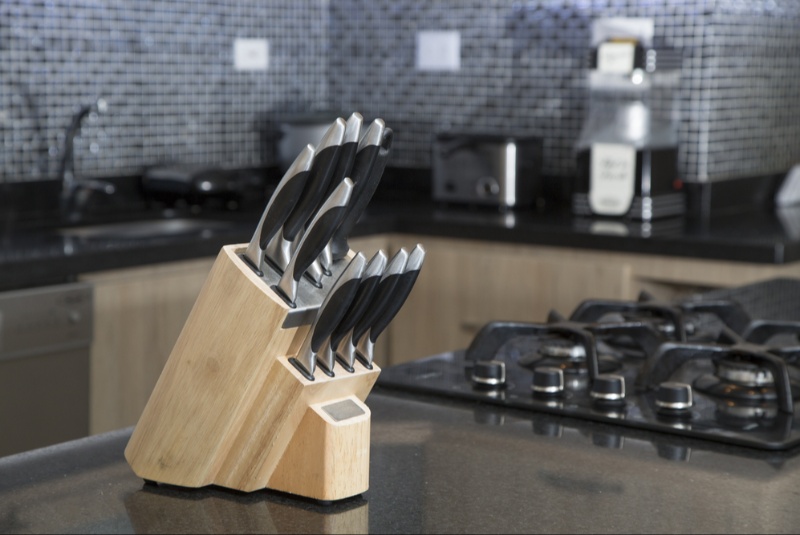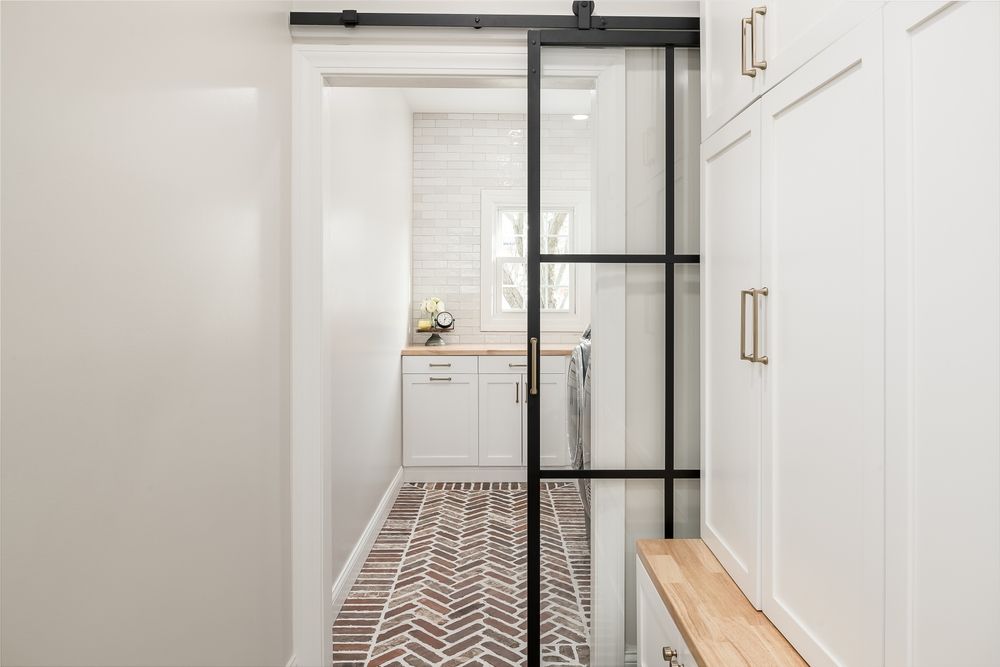In the realm of kitchen utensils, a knife set holds a revered position. From the simplest of meals to the most intricate culinary creations, knives are the unsung heroes of the kitchen. They are the trusted companions that allow us to slice, dice, chop, and carve with precision and ease. But with the vast array of choices available in the market, how do you choose the best knife set for your culinary adventures? Here, we'll embark on a journey through the world of kitchen knife sets, exploring pivotal considerations to ensure that your knife set not only looks good in your kitchen but also serves you efficiently for years to come.
1. Determine Your Needs
Every chef, whether a seasoned professional or an enthusiastic amateur, has a distinct cooking style. The first step in selecting the perfect knife set is to identify your unique culinary needs. Take a moment to reflect on the types of dishes you most frequently prepare. Are you a grill master who often finds themselves butchering meat? If so, a cleaver or a boning knife might be essential in your set. Perhaps you're more inclined towards creating colorful salads and precision vegetable cuts, in which case a good paring knife or utility knife would be pivotal. Having a clear idea of your culinary requirements will prevent you from purchasing unnecessary knives that might end up collecting dust in your kitchen.
2. Quality Over Quantity
In the age of kitchen gadgetry, it's easy to be enticed by the allure of extensive knife sets boasting a multitude of blades. A 20-piece knife set might seem like the ultimate kitchen arsenal, but ask yourself: do you genuinely need all those blades? More often than not, three to five high-quality knives can handle the majority of kitchen tasks with finesse. Consider this the golden rule of knife sets: prioritize quality over quantity. Invest in a few select knives that excel in performance and durability. A chef's knife, a paring knife, and a serrated bread knife are often deemed the trifecta of essential kitchen knives, capable of handling a wide range of culinary tasks with precision and ease.
3. Know Your Materials
One of the most crucial aspects of selecting the perfect knife set is understanding the materials from which the blades are crafted. Different knife blades are forged from various materials, each offering distinct strengths and characteristics:
Stainless Steel: This is a popular choice among consumers due to its resistance to rust and stains. Stainless steel knives are relatively low-maintenance and easy to clean. However, it's important to note that they might not retain their sharp edge as long as knives made from other materials.
Carbon Steel: Renowned for its exceptional sharpness and superior edge retention, carbon steel is a favorite among professional chefs. These knives can achieve an incredibly sharp edge and hold it well, making them ideal for precise cutting tasks. However, they are more prone to rust and discoloration and require diligent care and maintenance to prevent corrosion.
High-Carbon Stainless Steel: As the name suggests, this material combines the best properties of both stainless and carbon steel. Knives made from high-carbon stainless steel are known for their durability, rust resistance, and ability to maintain a sharp edge. They strike a balance between the low maintenance of stainless steel and the sharpness of carbon steel, making them a popular choice for many home cooks.
Understanding the properties of these materials can help you make an informed decision when selecting your knife set. Consider factors such as ease of maintenance, sharpness, and rust resistance to ensure that your knives meet your specific needs.
4. Handle with Care
While the blade of a knife is undoubtedly crucial, the handle is equally significant when it comes to your comfort and control while using the knife. When selecting a knife set, pay close attention to the design and material of the handles. Look for handles that are ergonomically designed to fit snugly in your hand, allowing for a comfortable and secure grip during extended use. Handle materials can vary, including wood, plastic, and metal. Each material has its unique feel and aesthetic appeal. However, regardless of the material, ensure that the handle is securely attached to the blade, preferably with rivets, to prevent any wobbling or loosening over time.

5. Balance is the Key
A well-balanced knife is a joy to wield in the kitchen. Balance refers to the distribution of weight between the blade and the handle. When selecting a knife, it's essential to assess its weight distribution. Hold the knife in your hand and gauge how it feels. A well-balanced knife should feel steady and secure, neither too blade-heavy nor too handle-heavy. A knife that is properly balanced allows for greater control and precision in your cutting and chopping tasks. It also reduces the risk of hand fatigue during extended periods of use, contributing to a safer and more enjoyable cooking experience.
6. The Tang Tale
The tang of a knife is an often-overlooked feature that can significantly impact its performance and durability. The tang is the portion of the blade that extends into the handle. There are two main types of tangs: full tang and partial tang.
Full Tang: Knives with a full tang have a blade that runs the entire length of the handle. This design offers several advantages, including better balance and durability. Full tang knives are known for their strength and longevity, making them a preferred choice among professional chefs. While they may be pricier, they are generally more robust and less prone to breakage, ensuring that your investment lasts for years.
Partial Tang: Knives with a partial tang have a blade that extends only partway into the handle. While knives with partial tangs can still perform admirably, they may be less durable than their full tang counterparts. The handle of a partial tang knife is typically attached to the blade using adhesives or other methods, which may not provide the same level of stability and longevity as a full tang construction.
When selecting a knife set, consider the type of tang that best aligns with your preferences and requirements. If durability and long-term performance are a top priority, investing in a set of knives with full tang construction can be a wise choice.
7. Sharpness Matters
In the world of knives, sharpness is paramount. A sharp knife is not only a pleasure to use but also a safer tool in the kitchen. When evaluating a knife for your set, pay close attention to its sharpness. A sharp knife requires less effort to cut through ingredients, reducing the need for excessive force and minimizing the chances of the knife slipping and causing accidents. Before making a purchase, consider testing the knife's sharpness. Some manufacturers even provide information about the sharpness of their knives, which can serve as a valuable reference point.
In addition to sharpness, it's essential to think about the knife's ability to maintain its edge over time. While some materials, such as high-carbon stainless steel, offer excellent edge retention, others may require more frequent sharpening. Consider how easy it is to sharpen the knife when needed. Some materials, while they remain sharp for longer periods, can be more challenging to sharpen once they become dull. Knowing how to maintain and sharpen your knives is an essential skill that ensures their longevity and continued performance.
8. Maintenance Matters
As with any tool, knives require maintenance to perform at their best. Before purchasing a knife set, it's essential to understand the maintenance requirements for the knives you select. Different materials and designs may demand specific care and cleaning methods. Here are some maintenance considerations to keep in mind:
Sharpening: All knives, regardless of their material, will eventually require sharpening to maintain their cutting edge. Consider investing in a quality knife sharpener or sharpening stones to keep your knives in top condition. Some knife sets may include sharpening tools, making it convenient to maintain your blades.
Cleaning: While it might be tempting to toss your knives in the dishwasher for quick cleaning, it's important to note that dishwashers can be harsh on knife blades and handles. Many knife manufacturers recommend handwashing knives with mild soap and warm water. This gentle approach helps preserve the sharpness and appearance of your knives.
Storage: Proper storage is essential to prevent damage to your knives and ensure their longevity. Consider using a knife block, magnetic knife strip, or blade guards to protect your knives when they're not in use. Avoid tossing knives into drawers where they can come into contact with other utensils and potentially become damaged.
Honing: Honing is the process of realigning the blade's edge between sharpening sessions. It helps maintain the sharpness of the knife for longer periods. Some knife sets include honing rods or steels that allow you to perform this simple maintenance task regularly.
Understanding how to care for your knives is vital to their longevity and performance. By following proper maintenance practices, you can ensure that your investment in a high-quality knife set pays off in the form of reliable and efficient kitchen tools that stand the test of time.
9. Cost Considerations
When it comes to purchasing a knife set, cost is undeniably a factor to consider. While it's tempting to opt for a budget-friendly set, it's essential to strike a balance between your budget and the quality of the knives you're acquiring. Consider your specific needs and how often you'll be using your knives. If you're an avid cook who frequently undertakes culinary adventures, investing in a high-quality knife set might initially seem pricier but can save you money in the long run. Quality knives are more durable, require less frequent replacement, and can significantly enhance your cooking experience. However, always stick to your budgetary constraints while ensuring that you're not compromising excessively on the quality of your knives.
10. Research and Reviews
In an age of information abundance, the power of consumer reviews and research cannot be overstated. When selecting a knife set, it's essential to tap into the wealth of knowledge available online and through reputable sources. Begin your journey by researching well-established brands and exploring their product lines. Reputable brands often offer a range of knife sets that cater to various needs and preferences.
Additionally, reading consumer reviews and testimonials can provide invaluable insights into the real-world experiences of fellow buyers. Consider visiting online marketplaces and forums dedicated to culinary enthusiasts to gather opinions and recommendations. Keep in mind that while reviews can be a valuable resource, personal preferences and requirements may vary, so it's essential to align the information you gather with your unique culinary needs.
Crafting Culinary Excellence
Embarking on the journey to purchase a new knife set can be both exhilarating and overwhelming. Knives are not merely kitchen tools; they are extensions of the chef's creativity and precision. The right knife set can elevate your culinary endeavors to new heights, enhancing your efficiency and enjoyment in the kitchen. As you navigate the world of kitchen knives, remember that the sharpest choice isn't solely about the blade alone but how well it complements your culinary style and needs.
By adhering to these guidelines, you can ensure that your investment brings a blend of aesthetics, functionality, and longevity to your kitchen. Whether you're a professional chef crafting exquisite dishes or an amateur cook exploring the joys of home cooking, your knife set will become an indispensable partner in your culinary adventures. So, select your knives with care, and let them be the instruments through which you craft culinary excellence in every meal you prepare.




